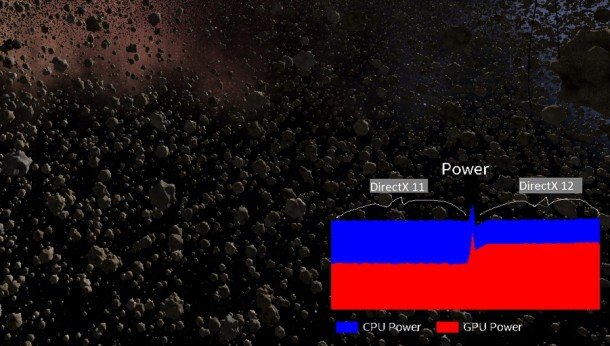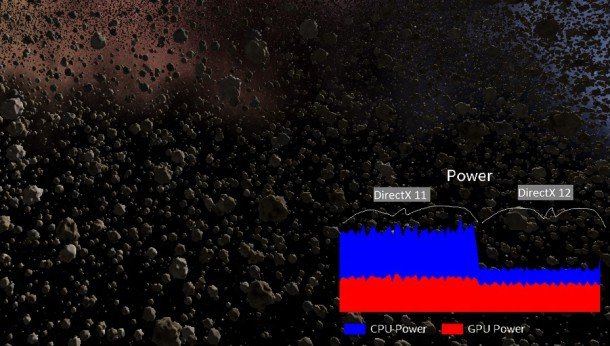Intel show off DirectX 12 performance advantage

Gamescom isn't the only big conference going on at the moment, though, if you're into Witcher 3 footage , Tomb Raider exclusivity rage and Snake slithering onto the PC , it's probably the most important. Still, this week has seen SIGGRAPH 2014 taking place in Vancouver, the 41st international conference on computer graphics. Intel has been there showing off how good DirectX 12 is going to be for its processors.
Using one of Microsoft's new Surface Pro 3 tablets, rocking an Intel Core i5 CPU, they have been showing a neat little graphics demo that could have been ripped directly out of Elite: Dangerous.
The demo shows an asteroid field made up of 50,000 unique lumps of space rock, all rendered on the HD 4400 processor graphics inside the CPU itself. At the flick of a switch (or more likely the tap of a key), Intel can show the difference between rendering with the DirectX 11 API and the upcoming DirectX 12 update.
Intel are showing two different versions, each highlighting an alternate usage of the DX 12 API. The first is what we really care about: performance. In this demo the Surface Pro 3 is run as fast as possible by the renderer, operating at the limits of the thermal and power constraints of the wee Microsoft tablet.
Under DirectX 11 the demo runs at just 19FPS - switching over to DirectX 12 that jumps up to 33FPS. That's over 70% quicker on the exact same hardware, just operating with updated DirectX software.

The interesting thing is how they've managed to do this and that's shown by the little graph in the bottom right hand corner of the demo shot. The tablet is still operating within the same power constraints as with DirectX 11, but because DX12 is designed to reduce CPU overhead and improve multi-threaded rendering, it has dropped the power demands of the CPU and given that spare capacity over to the boosted GPU.
The second demo covers power consumption, something that will be of interest to anyone out there with a gaming laptop that refuses to shift away from a plug socket for more than an hour.
Keep up to date with the most important stories and the best deals, as picked by the PC Gamer team.
In the power test Intel lock the frame rate of the asteroid demo so that the hardware is doing the same amount of work under both APIs. When the Surface Pro 3 is switched over to DirectX 12 the amount of power that the CPU component is drawing drops by over half.

The CPU is still doing the same amount of work but its now spread across all the cores available to the software. Because the load is being shared the individual cores don't have to work so hard and don't have to operate at such a high frequency.
The upshot of this is that the temperature goes down and the battery life goes up.
It's an impressive technology demo, and shows the potential improvements that DirectX 12 will offer when it eventually does arrive. Still, I'll be more impressed when Intel and Microsoft are able to show this sort of performance gain in an actual DirectX 12 coded game.

Dave has been gaming since the days of Zaxxon and Lady Bug on the Colecovision, and code books for the Commodore Vic 20 (Death Race 2000!). He built his first gaming PC at the tender age of 16, and finally finished bug-fixing the Cyrix-based system around a year later. When he dropped it out of the window. He first started writing for Official PlayStation Magazine and Xbox World many decades ago, then moved onto PC Format full-time, then PC Gamer, TechRadar, and T3 among others. Now he's back, writing about the nightmarish graphics card market, CPUs with more cores than sense, gaming laptops hotter than the sun, and SSDs more capacious than a Cybertruck.

